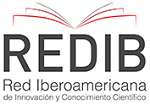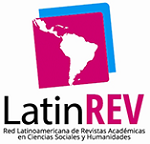Engineering education. A comparative analysis of burnout syndrome in theoretical and practical university academic staff
DOI:
https://doi.org/10.15649/2346030X.3948Keywords:
Burnout syndrome, academic staff, university, teaching, engineeringAbstract
The objective was to develop a comparative analysis in the measurement of Burnout Syndrome in university teachers who teach theoretical subjects compared to those who teach practical subjects in engineering education. As a hypothesis, it is proposed that practical subjects have a greater stressful component than theoretical ones, as a risk factor for suffering this syndrome, in the teaching of one of the most complex sciences. This was a quantitative, field study of correlational level, developed with a purposive sample of 60 teachers who teach in 3 engineering subjects (20 industrial, 20 mechanical and 20 electronics), in a public university in Cúcuta-Norte de Santander. The CBP-R scale was used as an instrument, in the variable stress and burnout processes, Factor I "burnout", sub-scales: "personal exhaustion" (8 items), "depersonalization" (4 items) and "lack of fulfillment" (7 items), with a reliability of 0.8. The sample divided into 2 groups (theory teachers - practice teachers) revealed that the teaching of mechanical engineering in theory and practice presents a high scale of burnout. The teaching of electronic engineering in theory and industrial engineering in practice presented a high scale of depersonalization, mostly low, with electronic engineering having a slight tendency to medium-high. The theoretical and practical teaching of the three engineering subjects presents a high scale in terms of lack of fulfillment. It is concluded around the hypothesis of the study, that for the dimissions exhaustion and depersonalization, a directly proportional relationship is found in the theoretical and practical teaching of the three engineering. With an α<0.05, it is concluded that this correlation is highly significant, being highly statistically determinant for the generation of SB. For the dimension lack of accomplishment, a directly proportional relationship is found in the theoretical and practical teaching of the three engineering degrees under study; however, by obtaining an α>0.05, it is concluded that this correlation is not statistically significant. In general, in the inferential statistical analysis of significance for the three dimensions, an α<0.05 is obtained, which implies a highly significant relationship in SB between the three dimensions, the two study groups (theory and practice), and three types of engineering.
References
L Alvarado, R Amaya, S Reyes, R Muñoz, E Farroñán, E Sansores, “Síndrome de burnout en profesores universitarios de latinoamérica: una revisión de literatura”, Telos, vol. 25, n° 3, pp. 802-818, 2023. https://www.redalyc.org/journal/993/99376074015/html/
R Zuin, F Peñalver, M Zuin, “Síndrome de burnout o de agotamiento profesional en la Neurología argentina. Resultados de una encuesta nacional. Neurología Argentina”, vol. 12, n° 1, pp. 4-12, 2020. https://www.sciencedirect.com/science/article/abs/pii/S1853002819300680
C Macía, D Martín, J Moreno, M Aranda, “Síndrome de burnout en especialistas de medicina interna y factores asociados a su desarrollo”, Revista Clínica Española, vol. 220, n° 6, pp. 331-338, 2020. https://www.sciencedirect.com/science/article/abs/pii/S0014256519302978
F Benavides, J Delclós, C Serra, “Estado de bienestar y salud pública: el papel de la salud laboral Estado de bienestar y salud pública. Gaceta Sanitaria, vol. 32, n° 4, pp. 377-380, 2018. https://www.sciencedirect.com/science/article/pii/S0213911117301863
S Madero, G Barboza. Interrelación de la cultura, flexibilidad laboral, alineación estratégica, innovación y rendimiento empresarial. Contaduría y Administración, vol. 60, n° 4, pp. 735-756, 2015. https://www.sciencedirect.com/science/article/pii/S0186104215000212
J Arquero, J Donoso. Docencia, investigación y burnout: el síndrome del quemado en profesores universitarios de Contabilidad. Revista de Contabilidad, vol. 16, n° 2, pp. 94-105, 2013. https://www.sciencedirect.com/science/article/pii/S1138489113000083
M Suárez, H Muñoz, “¿Qué pasa con los académicos?”, Revista de la Educación Superior, vol. 45, n° 180, pp. 1-22, 2016. https://www.sciencedirect.com/science/article/pii/S0185276016300632
Organización Mundial de la Salud, “La OMS y la OIT piden nuevas medidas para abordar los problemas de salud mental en el trabajo”, Ginebra: 2022. https://www.who.int/es/news/item/28-09-2022-who-and-ilo-call-for-new-measures-to-tackle-mental-health-issues-at-work
Organización Mundial de la Salud, “Informe mundial sobre salud mental: Transformar la salud mental para todos”, Ginebra: 2022. https://www.who.int/es/publications/i/item/9789240050860
N Díaz, “Síndrome Burnout en docentes de Educación Básica en Bogotá: una mirada cualitativa de sus causas, consecuencias y posibles soluciones”, [Trabajo de Grado], Bogotá: Universidad Nacional de Colombia. 2022. https://repositorio.unal.edu.co/bitstream/handle/unal/84804/1032423237.2022.pdf?sequence=2&isAllowed=y
P Tito, M Torres, E Pérez, “Predictores del síndrome de burnout en docentes universitarios: un análisis factorial exploratorio”, Enfermería Global, vol. 21, n° 67, pp. 50-65, 2022. https://dx.doi.org/10.6018/eglobal.496901
E Cabezas, “Análisis del síndrome de Burnout en docentes de la Facultad de Ingeniería de la Universidad Nacional de Chimborazo y su incidencia en el desempeño laboral”, Datos industriales, vol. 19, n° 1:59, pp. 1-12. DOI: 10.15381/idata.v19i1.12538
R Hernández, C Fernández y P Baptista, “Metodología de la investigación”, México: Mc Graw Hill, 2010.
F Arias, “El proyecto de investigaciones. Guía para la elaboración”, Caracas: Episteme, 2006.
Ministerio de Salud y Protección Social, Resolución 8430 de 1993. Bogotá: 1993. Disponible en: https://www.hospitalsanpedro.org/images/Comite_Investigacion/Resolucion_8430_de_1993.pdf
B Moreno, E Garrosa, J González, “La evaluación del estrés y el burnout del profesorado: El CBP-R”, Revista de Psicología del Trabajo y de las Organizaciones, vol. 16, n° 2, pp. 151-171, 2000. https://journals.copmadrid.org/jwop/files/63238.pdf
M Tamayo, “El proceso de la investigación científica”, México: Editorial Limusa. 2004
D George, P Mallery, “SPSS for windows step by step: A simple guide and reference”. Fourth edition (11.0 update). Boston: Allyn & Bacon, 2003. https://wps.ablongman.com/wps/media/objects/385/394732/george4answers.pdf
L Vega, “La educación en ingeniería en el contexto global: propuesta para la formación de ingenieros en el primer cuarto del Siglo XXI”, Ingeniería, Investigación y Tecnología, vol. 14, n° 2, pp. 177-190, 2013. https://www.sciencedirect.com/science/article/pii/S1405774313722352
J Rojas, B Totolhua, D Rodríguez, “Síndrome de Burnout en docentes universitarios latinoamericanos: Una revisión sistemática”, Espiral, Cuadernos del Profesorado, vol. 14, n° 29, pp. 1-15. file:///C:/Users/usuario/Downloads/Dialnet-SindromeDeBurnoutEnDocentesUniversitariosLatinoame-8058548.pdf
E Maya, F Pino, “Reflexión curricular en la Facultad de Ingeniería Electrónica y Telecomunicaciones de la Universidad del Cauca: una oportunidad de innovación”, vol. 1, n° 1, 2019. DOI: 10.18687/LACCEI2019.1.1.188
C Freire, M Ferradás, A García, J Núñez, “Perfiles docentes basados en su sintomatología de burnout: diferencias entre etapas educativas y relación con el funcionamiento psicológico adaptativo”, Revista de Psicodidáctica, vol. 28, n° 1, pp. 1-9, 2023. https://www.sciencedirect.com/science/article/abs/pii/S1136103422000260
A García, C Escorcia, B Perez, “Síndrome de Burnout y sentimiento de autoeficacia en profesores universitarios”, Propósitos y Representaciones, vol. 5, n° 2, pp. ,2017. http://dx.doi.org/10.20511/pyr2017.v5n2.170
M García, S Iglesias, M Saleta, J Romay, “Riesgos psicosociales en el profesorado de enseñanza universitaria: diagnóstico y prevención”, Revista de Psicología del Trabajo y de las Organizaciones, vol. 32, n° 3, pp. 173-182, 2016. https://www.sciencedirect.com/science/article/pii/S1576596216300184.
Downloads
Published
How to Cite
Issue
Section
Altmetrics
Downloads
License
Copyright (c) 2024 AiBi Journal of Research, Administration and Engineering

This work is licensed under a Creative Commons Attribution 4.0 International License.
The journal offers open access under a Creative Commons Attibution License

This work is under license Creative Commons Attribution (CC BY 4.0).











